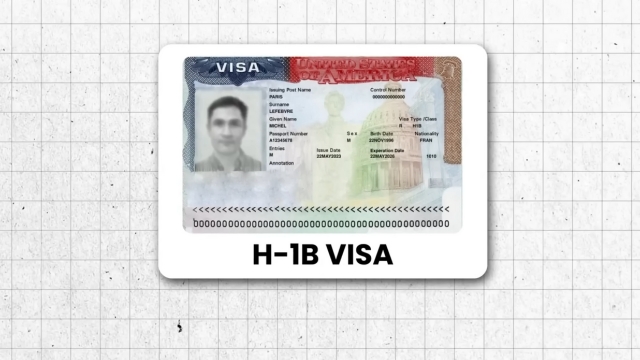The H-1B visa remains one of the most important pathways for skilled foreign professionals to work in the United States. Created to allow U.S. companies to hire highly educated workers in specialty fields such as technology, engineering, finance, healthcare, and academia, the visa program has become a cornerstone of the modern American labor market.
In 2025, the demand for H-1B visas is still far greater than the annual supply. Each year, only 85,000 new visas are issued, including 65,000 under the regular cap and an additional 20,000 reserved for applicants with advanced degrees from U.S. institutions.
Yet, according to U.S. Citizenship and Immigration Services (USCIS), the number of registrations routinely exceeds 400,000 applications annually. This mismatch creates a lottery system where even highly qualified candidates have no guarantee of selection.
For U.S. employers, navigating the H-1B process is critical to filling roles that cannot easily be staffed domestically. For foreign workers, it represents both an opportunity and a challenge-offering the chance to build a career in the U.S. but requiring careful preparation to meet strict eligibility and compliance rules.
What is the H-1B Visa?
The H-1B is a non-immigrant work visa that allows U.S. employers to temporarily hire foreign workers in specialty occupations. Specialty occupations are defined as jobs requiring:
- A bachelor’s degree or higher (or equivalent experience) in a specific field.
- Application of specialized knowledge, such as computer science, engineering, mathematics, medicine, architecture, or finance.
The visa is typically valid for three years, with the possibility of extension up to six years. In some cases, workers can remain longer if they are in the process of applying for permanent residency (green card).
Who is Eligible for the H-1B Visa?

Employee Requirements
- Must have at least a bachelor’s degree or equivalent in a relevant specialty.
- If using foreign credentials, applicants must provide equivalency evaluations.
- Must demonstrate specialized skills relevant to the offered position.
Employer Requirements
- Must offer a role that qualifies as a specialty occupation.
- Must pay at least the prevailing wage for the position in the geographic area.
- Must file a Labor Condition Application (LCA) with the Department of Labor before petitioning USCIS.
The H-1B Cap and Lottery System
Each fiscal year, the U.S. government issues a limited number of H-1B visas:
Category
Number of Visas Available
Regular Cap
65,000
Master’s Cap (U.S. advanced degree holders)
20,000
Exempt (universities, nonprofits, government research)
Unlimited
Due to oversubscription, USCIS uses a random lottery system to determine which applications are selected for review.
Step 1: Employer Registration

The H-1B process begins with the employer, not the worker. U.S. companies interested in sponsoring foreign employees must first register electronically with U.S. Citizenship and Immigration Services (USCIS) during the designated annual registration window. This usually opens in March and stays active for a few weeks.
Each registration costs $10 per candidate and requires basic information about the employer and the worker being sponsored. Importantly, registration is not the same as filing a full petition.
Instead, it serves as a way for USCIS to collect interest and determine whether the number of applicants exceeds the annual visa cap. Because registrations are inexpensive, demand often greatly outstrips supply. In 2024, for instance, more than 400,000 applications were submitted for just 85,000 available slots.
Step 2: Lottery Selection
When the number of registrations exceeds the cap – and it almost always does – USCIS conducts a random lottery to decide which applications are eligible to move forward.
Cap Category
Number of Visas
Notes
Regular Cap
65,000
Available to all applicants with at least a bachelor’s degree or equivalent
Master’s Cap
20,000
Reserved for applicants with advanced U.S. degrees (Master’s or higher)
Exempt Employers
Unlimited
Universities, nonprofit research organizations, and government research entities are not subject to the cap
Employers whose registrations are selected receive an invitation to file a full H-1B petition on behalf of the candidate. Those not selected must wait until the next fiscal year or explore alternative visa options.
Step 3: Filing the Petition

Once selected in the lottery, employers must file a detailed petition package with USCIS.
The petition includes:
- Form I-129 (Petition for Nonimmigrant Worker).
- An approved Labor Condition Application (LCA) from the Department of Labor, confirming the company will pay the prevailing wage.
- Supporting evidence such as the worker’s diplomas, transcripts, resume, and proof of professional qualifications.
- A clear job description showing that the position qualifies as a “specialty occupation.”
Filing Costs
The cost of filing varies depending on company size and type:
Fee Type
Amount
Applies To
Base Filing Fee
$460
All employers
American Competitiveness and Workforce Improvement Act Fee
$1,500 (or $750 for small employers)
Companies with more than 25 employees
Fraud Prevention and Detection Fee
$500
All new petitions
Public Law 114-113 Fee
$4,000
For companies with 50+ employees where more than 50% are H-1B/L-1 workers
Premium Processing (Optional)
$2,500
Guarantees a response within 15 days
Total costs can range from $1,710 to over $6,000 per petition, not including attorney’s fees or administrative costs.
Step 4: USCIS Processing
If your case requires a Request for Evidence (RFE), it may take more time to process. If your case is outside the date range posted, you can ask about it here: https://t.co/ywR41eXrJr pic.twitter.com/3wOm3ZCkcu
— USCIS (@USCIS) September 27, 2018
After the petition is filed, USCIS begins its review. The processing timeline varies:
- Regular Processing: Typically takes 3–6 months, depending on USCIS workload.
- Premium Processing: For an additional $2,500 fee, employers can receive a decision within 15 calendar days.
During this stage, USCIS may issue a Request for Evidence (RFE) if the petition lacks sufficient documentation or if the agency questions whether the role truly qualifies as a specialty occupation. Employers must respond promptly with additional proof, or the petition risks denial.
Step 5: Visa Issuance and Employment
If the petition is approved, the foreign worker can begin employment on or after October 1, which marks the start of the new fiscal year.
- If the worker is already in the U.S. under another legal status, their H-1B status can change automatically on October 1.
- If the worker is abroad, they must attend a visa interview at a U.S. consulate in their home country before entering the U.S.
Once the visa is issued, the employee can legally live and work in the United States for the sponsoring employer.
H-1B Visa Duration and Extensions
The H-1B visa is temporary, but it allows for multiple extensions.
Duration Type
Length
Notes
Initial Grant
3 years
Standard approval for first-time H-1B workers
Extension
Up to 3 years
Maximum stay of 6 years total
Beyond 6 Years
Case-specific
Allowed if the worker has an approved I-140 immigrant petition or is waiting for a green card due to backlogs
This flexibility makes the H-1B an important stepping-stone toward permanent residency for many professionals.
H-1B Compliance and Employer Obligations
Employers face strict compliance rules once an H-1B worker is hired. They must:
- Pay the prevailing wage at all times, as certified in the LCA.
- Provide working conditions comparable to those of U.S. workers in the same role.
- Notify USCIS if there are material changes in job title, responsibilities, or location.
- Cover mandatory filing fees; employers may not pass these costs onto the worker.
Failure to comply can result in serious consequences, including fines, back wages owed, loss of eligibility to sponsor future workers, and even criminal penalties in cases of willful fraud.
Challenges and Criticisms
View this post on Instagram
Despite its importance, the H-1B program is not without controversy.
- Oversubscription: With more than four times as many applicants as available visas, the lottery system leaves many qualified candidates without opportunities.
- Wage Concerns: Critics argue that some employers use H-1B workers to reduce labor costs. While prevailing wage rules exist, enforcement remains uneven.
- Employer Dependence: Workers are tied to their sponsoring employers. Switching jobs is complex, which can create power imbalances.
- Backlogs: For workers seeking permanent residency, long green card queues – especially for applicants from India and China – mean many remain on temporary H-1B status for years.
These criticisms have fueled calls for reform, but so far, the program remains largely unchanged in structure, aside from processing updates and fee adjustments.
Alternatives to the H-1B Visa
For applicants not selected in the lottery, several alternative visa pathways exist:
Visa Type
Who It’s For
Key Benefits
L-1 Visa
Employees transferring from a foreign branch of a multinational company
Allows intracompany transfers; no annual cap
O-1 Visa
Individuals with extraordinary ability in the sciences, arts, business, or athletics
No lottery; renewable; prestige pathway
F-1 OPT / STEM OPT
Graduates of U.S. universities
Up to 12–36 months of work authorization; can reapply for H-1B
E-2 Investor Visa
Entrepreneurs from treaty countries investing in U.S. businesses
Allows business ownership and work authorization
These alternatives provide backup options, though not all are suitable for every candidate.
Conclusion
@alexisanddean What’s going with with H1B visas? Also, check out @Jacob Sapochnick for more information about what’s going on! #h1bvisa #workvisa #immigrant #america #visa ♬ original sound – Alexis and Dean
The H-1B visa remains a highly competitive but essential program for both U.S. employers and skilled foreign professionals. The process is lengthy, costly, and uncertain due to the lottery, but it continues to serve as a critical pipeline for global talent.
For employers, success depends on early preparation, careful compliance, and willingness to cover costs. For workers, it requires patience, strong documentation, and an understanding of backup options in case the lottery doesn’t work in their favor.
Regulatory shifts like the SEC decision to scrap quarterly reporting show how policy changes in one area can ripple across business planning, and the H-1B process often faces similar uncertainty shaped by federal decisions.
As debates about reform continue, one fact is clear: the H-1B visa will remain central to America’s workforce strategy in fields that demand advanced skills, innovation, and international expertise.

